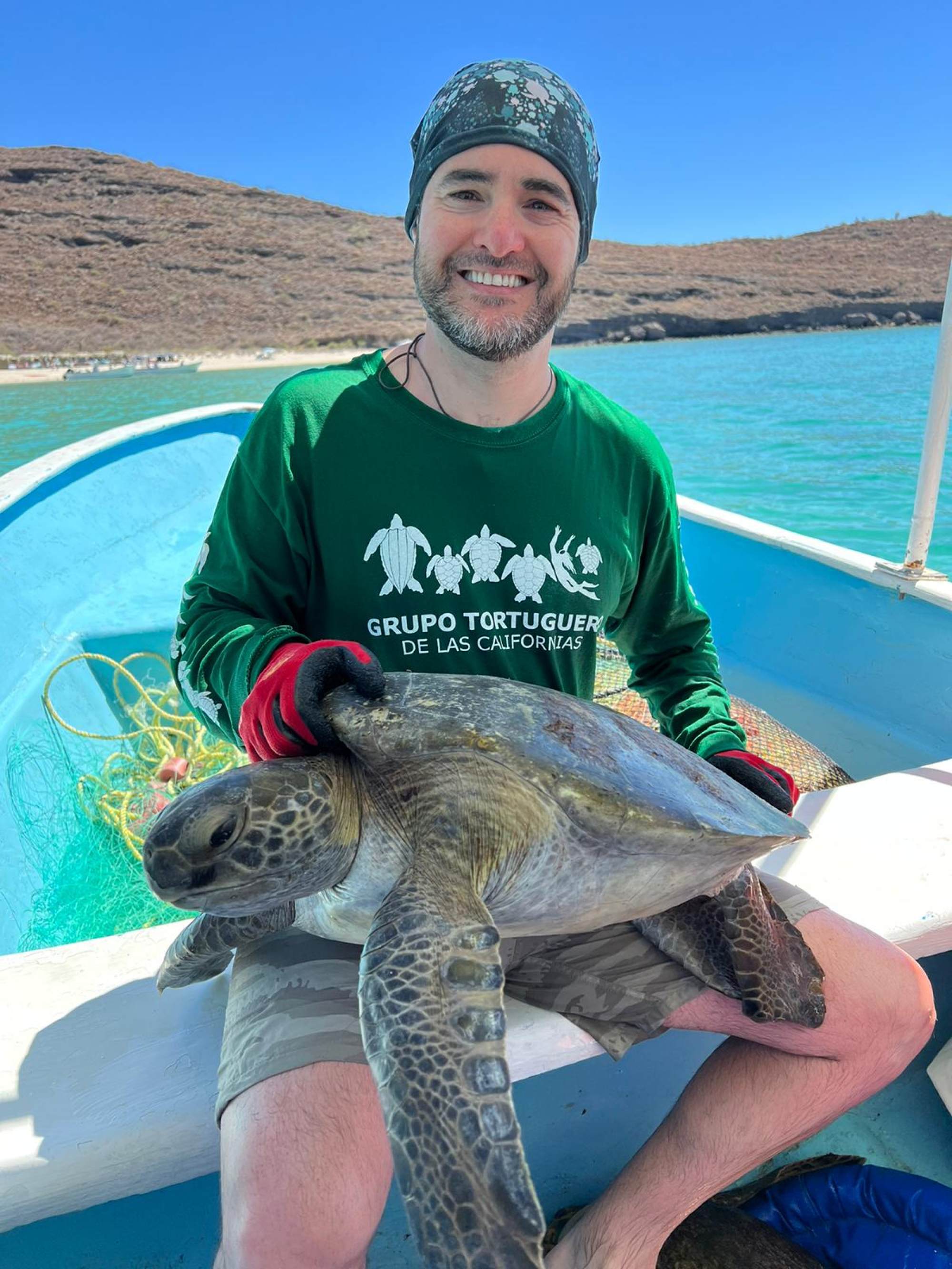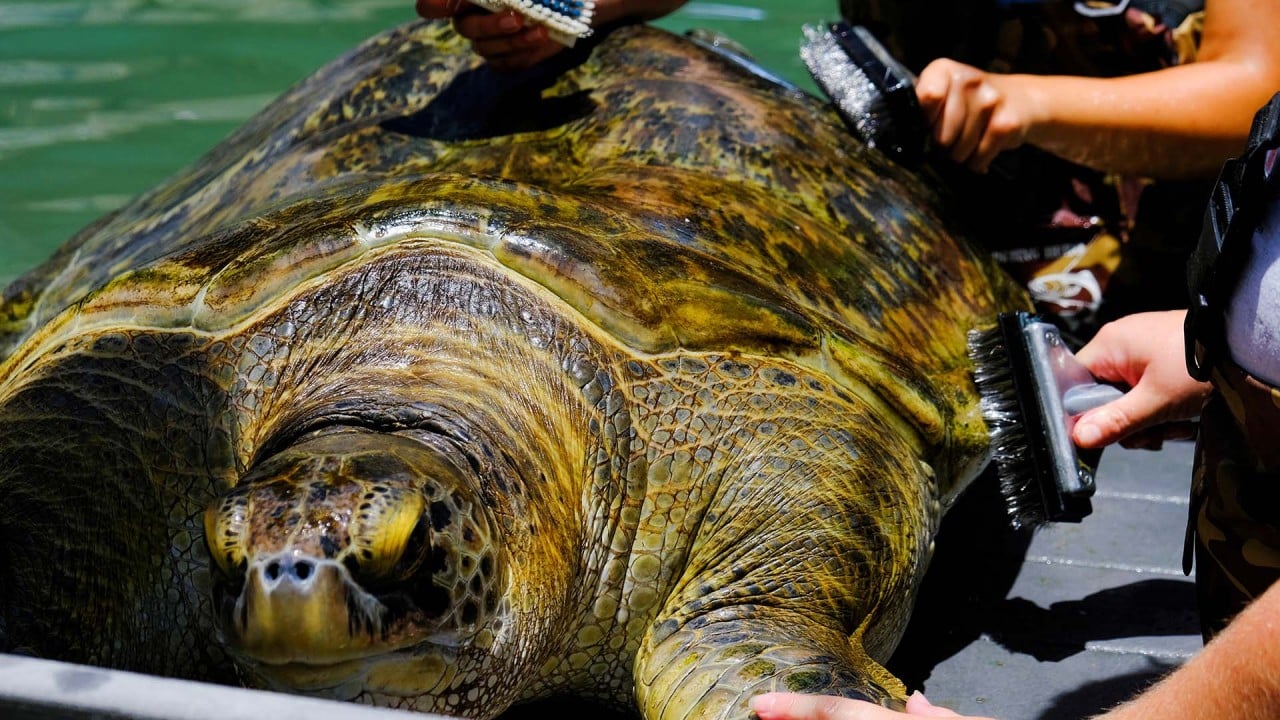
China the top destination for trafficked sea turtles, study finds
- Scientists say Vietnam is biggest source of poached turtles, while nearly 90 per cent of the marine reptiles end up in China or Japan
- Illegal exploitation has dropped over the past decade, but researcher warns downward trend could reverse if demand remains high
More than 1.1 million sea turtles were illegally killed over the past three decades, and China and Japan were the top destinations for trafficked turtle products, according to a new study.
According to the first global assessment of the illegal exploitation of marine turtles, China and Japan received 46 and 43 per cent of traded turtles, respectively.
The researchers identified Vietnam as the top source of sea turtle trafficking, and Vietnam to China was the most common trafficking route between 1990 and 2020. Nearly 43,000 turtles were traded internationally in those 30 years, according to the article published in the peer-reviewed journal Global Change Biology last week.
“In China and Vietnam, whole stuffed turtles are seen as a symbol of status and wealth, while tortoiseshell products are a traditional component of Japanese dress and remain highly valued,” said Jesse Senko, co-first author of the study and an assistant research professor at Arizona State University.
The endangered green turtle was the most exploited species, accounting for 56 per cent of trafficked marine turtles, followed by the critically endangered hawksbill sea turtle at 39 per cent.
Green turtles are hunted for human consumption and their parts, while hawksbills are in demand for their brown and yellow carapace, which can be made into jewellery and ornaments, according to the WWF.

The researchers said Vietnamese authorities in 2014 seized 7,000 turtle carcasses in a warehouse – the single largest seizure of marine turtles ever recorded. They were mostly taxidermied hawksbill turtles thought to be bound for sale in China, according to the study.
Madagascar and some Asian countries, including China, Vietnam, Indonesia, Malaysia and the Philippines, have become “contemporary hawksbill exploitation hotspots”, the scientists said.
“Vessels leave ports with the express purpose of targeting hawksbills from Malaysia, the Philippines and Indonesia to supply international black market circuits, including high-end consumer markets of East Asia, with theoretical flight and vessel routes flowing from these countries directly to China or through Vietnam into China,” the paper said.
“Anecdotal evidence suggests that hawksbill turtles in Asia are targeted by vessels originating from the Hainan province in China as well as Vietnam and Thailand, while Africa may be supplying marine turtles seized in China via transshipment through Indonesia.”
The study showed a 28 per cent drop in the reported illegal exploitation of sea turtles in the last decade. Across 65 countries, there were around 7,900 turtles killed per year in the 1990s, 61,000 in the 2000s and 44,000 in the 2010s.
“Our assessment suggests that illegal exploitation appears to have declined over the past decade and, with some exceptions, is primarily occurring in large, stable and genetically diverse marine turtle populations,” the scientists wrote.
The researchers are affiliated with institutions in Britain, Germany and the United States, and their analysis was based on data from peer-reviewed studies, NGO reports, media reports and surveys of local experts.
Senko said although it was not likely current levels of illegal exploitation would have a detrimental impact on most sea turtle populations, assessing illegal activity is difficult, especially when it is organised.
He said it is hard to predict whether the illegal exploitation of sea turtles will continue to decline in the future.
“Legislative protection for sea turtles and awareness of their ecological importance is increasing, which would be expected to lead to a continued downward trend.
“On the other hand, increasing economic inequality and unrest could lead to an increase in illegal exploitation, assuming demand remains high,” he said.
Addressing demand is key to reducing illicit wildlife trade, he said.
“Because as long as there is demand for sea turtle products, particularly from high-income regions, people will always respond to that with supply of sea turtles, particularly from low-income regions,” he said.



